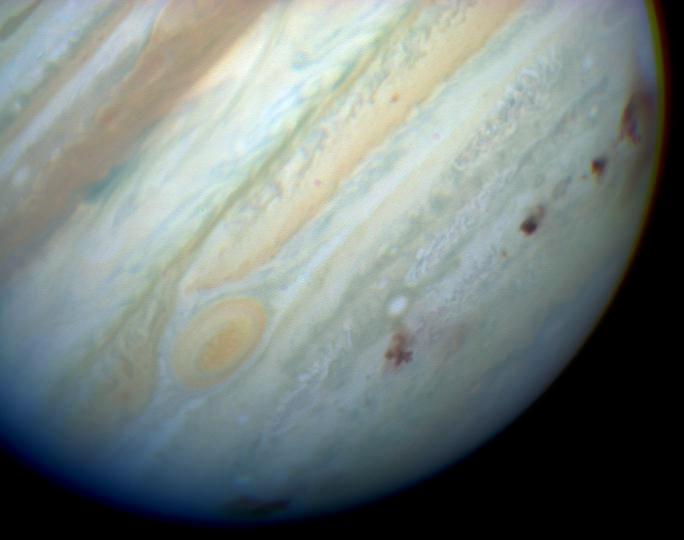Monday, September 2, 2013
Comet Shoemaker-Levy 9
The most violent event ever observed in the solar system happened in Jupiter's southern hemisphere between July 16 and July 22, 1994. A series of 22 comet fragments known as Shoemaker-Levy 9 collided with the planet at 60 kilometers per second, about seven and a half times faster than the International Space Station orbits Earth, and left behind a series of impact scars and mushroom clouds each similar in size to the Earth. You can read more about the event here:
Comet Shoemaker-Levy 9
Shoemaker-Levy 9 was initially about five kilometers across, comparable in size to the asteroid that caused the K-T extinction event that killed off most of the dinosaurs. Two years before the collision, the comet had approached, but just missed Jupiter, binding it gravitationally to the planet. Tidal forces from that encounter ripped the nucleus apart into a series of comet fragments that the discoverers likened to "pearls on a string." Because of this encounter, the comet wound up impacting Jupiter in a series of relatively low-speed blows rather than a single interplanetary-speed slam, but the total energy delivered to the atmosphere was still equivalent to about six trillion tons of TNT, on the order of 600 times the combined explosive energy of every nuclear weapon ever built by humans. Kinetic energy packs quite a punch at the speeds things move in space.
The string of impacts in July 1994 were tremendous not just for their awesome scale, but in their good timing. Even Jupiter, the most massive and bulky planet in the solar system, doesn't encounter an object so big very often. Shoemaker-Levy 9 was probably the first comet so big to strike any planet in the solar system since the beginning of civilization, and it came along just after the Hubble Space Telescope's flawed mirror optics were repaired, and the Galileo spacecraft, five years along on her six-year voyage to Jupiter, had a direct view of impacts on the far side of Jupiter from Earth. Observing the impact of Shoemaker-Levy 9 is the kind of once-in-a-lifetime opportunity astronomers dream about.
Like the Tunguska Event of 1908 or the Chelyabinsk meteor of this year, Shoemaker-Levy 9 is a reminder that though the skies seem changeless on a human scale, we actually live in a dynamic and potentially hostile clime where every once and a while cataclysmic intersections of planets and mountain-size icebergs occur. We'd do well to heed the warning embedded in the messages we take in through our telescopes and spacecraft.
Subscribe to:
Post Comments (Atom)



No comments:
Post a Comment